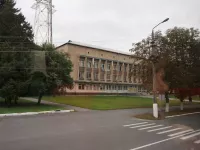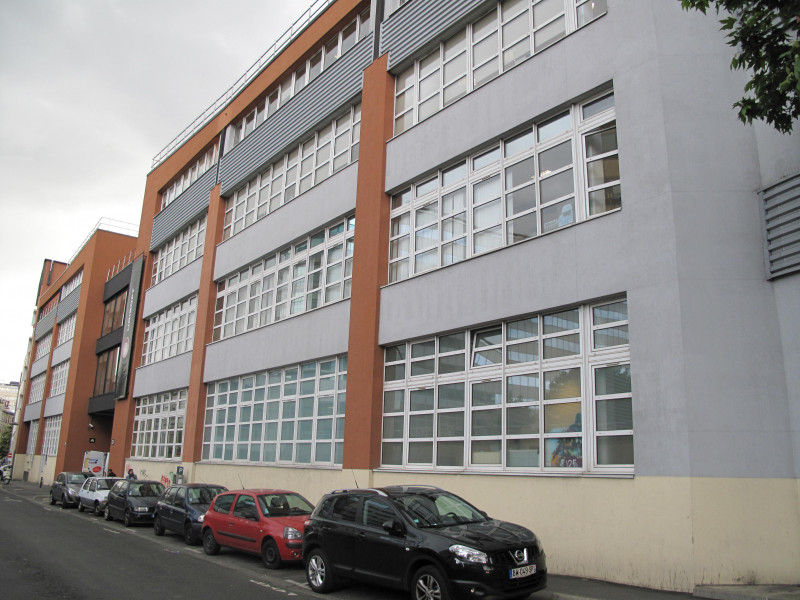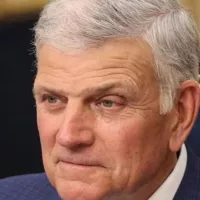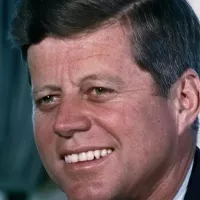Belarus is a landlocked country in Eastern Europe, bordered by Russia, Ukraine, Poland, Lithuania, and Latvia. Its area spans 207,600 square kilometers and has a population of approximately 9.1 million. Minsk is the capital and largest city, holding special administrative status. The country has a hemiboreal climate and is divided into six regions.
1905: Belarusian documents permitted
In 1905, no documents in Belarusian were permitted by the Russian government, until that year.
1917: Confusion over the term White Russia
After the Bolshevik Revolution in 1917, the term White Russia caused confusion because it was also the name of the military force that opposed the red Bolsheviks.
1917: Russian Revolution aftermath
In 1917, after the Russian Revolution, multiple states emerged, vying for legitimacy amidst the ensuing Civil War, eventually leading to the establishment of the Byelorussian SSR.
March 1918: Declaration of Independence
On March 25, 1918, Belarus first declared independence under German occupation, forming the Belarusian People's Republic during the negotiations of the Treaty of Brest-Litovsk.
1918: The Belarusian People's Republic Creation
The Belarusian People's Republic existed from 1918 to 1919 and was the first attempt to create an independent Belarusian state under the name "Belarus".
January 1919: Declaration of the Socialist Soviet Republic of Byelorussia
In January 1919, a part of Belarus under Bolshevik Russian control was declared the Socialist Soviet Republic of Byelorussia (SSRB).
1919: Belarusian People's Republic End
The Belarusian People's Republic existed from 1918 to 1919, ceasing to exist because the territory was dominated by various armies.
1919: Proposed Curzon Line
The borders of the Byelorussian SSR and Poland were redrawn, in accord with the 1919-proposed Curzon Line.
July 1920: Creation of the Byelorussian Soviet Socialist Republic
The Byelorussian Soviet Socialist Republic (BSSR) was created in July 1920.
1920: Creation of Republic of Central Lithuania
In 1920, The Republic of Central Lithuania was created following the staged rebellion of soldiers of the 1st Lithuanian–Belarusian Division of the Polish Army under Lucjan Żeligowski.
1921: Division of Contested Lands
In 1921, after the war ended, the contested lands were divided between Poland and the Soviet Union.
January 1922: Annexation of Republic of Central Lithuania
On January 8, 1922, after a variety of delays and a disputed election, the Republic of Central Lithuania was annexed to Poland.
1922: Byelorussian SSR Founding Member
In 1922, the Byelorussian SSR became a founding member of the Union of Soviet Socialist Republics.
1927: Banning of Belarusian Organization
In 1927, a Belarusian organization, the Belarusian Peasants' and Workers' Union, was banned.
1935: Repressions against Minorities
In 1935, after the death of Piłsudski, a new wave of repressions was released upon the minorities, with many Orthodox churches and Belarusian schools being closed.
September 1939: Soviet Invasion of Eastern Poland
In September 1939, the Soviet Union invaded and occupied eastern Poland following the German invasion, marking the beginning of World War II.
October 1939: Annexation of Western Belorussia
On October 28, 1939, the Soviet-controlled Byelorussian People's Council officially took control of the territories of Western Belorussia in Białystok.
1939: Soviet Occupation in 1939
Free development of literature occurred only in Polish-held territory until the Soviet occupation in 1939.
1939: Modern Borders Take Shape
In 1939, Belarus's borders began to resemble their modern form when lands of the Second Polish Republic were reintegrated after the Soviet invasion of Poland.
1941: Nazi Germany invaded the Soviet Union
In 1941, Nazi Germany invaded the Soviet Union and the defense of Brest Fortress was the first major battle of Operation Barbarossa.
1941: Beginning of German Occupation
In 1941, The German occupation and war on the Eastern Front devastated Belarus.
1941: German occupation of Byelorussian SSR
In 1941, most of Western Belarus became part of the Reichskommissariat Ostland.
1943: Belarusian Central Council set up
In 1943, German authorities allowed local collaborators to set up a client state, the Belarusian Central Council.
1943: Żeligowski memoir published
In 1943, Żeligowski published his memoir in London and condemned the annexation of the Republic by Poland.
1944: End of German Occupation
The Byelorussian SSR remained under German occupation until 1944.
1945: Founding Member of the United Nations
In 1945, the Byelorussian SSR became a founding member of the United Nations along with the Soviet Union.
1945: Byelorussian SSR joins the United Nations
In 1945, the Byelorussian SSR joined the United Nations along with the Ukrainian SSR as one of the original 51 members.
1953: Nikita Khrushchev succeeded Stalin
After Stalin died in 1953, Nikita Khrushchev continued his predecessor's cultural hegemony program
1971: Population Regains Pre-War Level
The population of Belarus did not regain its pre-war level until 1971.
1985: Release of "Come and See"
In 1985, the film "Come and See" was released, focusing on the Belarusian partisans during World War II.
1986: Chernobyl nuclear fallout contaminates Byelorussian SSR
In 1986, the Byelorussian SSR was contaminated with most (70%) of the nuclear fallout from the explosion at the Chernobyl power plant, which was located 16 km beyond the border in the neighboring Ukrainian SSR.
March 1990: Elections for seats in the Supreme Soviet of the Byelorussian SSR
In March 1990, elections were held for seats in the Supreme Soviet of the Byelorussian SSR. Although the pro-independence Belarusian Popular Front gained only 10% of the seats, it marked a step toward independence.
July 1990: Belarus declares itself sovereign
On 27 July 1990, Belarus declared itself sovereign by issuing the Declaration of State Sovereignty of the Belarusian Soviet Socialist Republic.
July 1990: Proclamation of Sovereignty
On July 27, 1990, the parliament of the republic proclaimed the sovereignty of Belarus.
1990: Decrease in Belarusian-Language Literature
From 1990, there was a significant decrease in the annual circulation of Belarusian-language literature.
1990: Forest cover in Belarus
In 1990, forest cover in Belarus was 7,780,000 hectares (ha).
April 1991: Wide-scale strikes erupt
In April 1991, wide-scale strikes erupted across Belarus.
August 1991: Byelorussia becomes the Republic of Belarus
On 25 August 1991, with the support of the Communist Party of Byelorussia, the country's name was changed to the Republic of Belarus.
August 1991: Declaration of Independence
On August 25, 1991, Belarus gained independence during the dissolution of the Soviet Union.
December 1991: Dissolution of the Soviet Union declared
On 8 December 1991, Stanislav Shushkevich of Belarus, Boris Yeltsin of Russia, and Leonid Kravchuk of Ukraine met in Białowieża Forest to formally declare the dissolution of the Soviet Union and the formation of the Commonwealth of Independent States.
1991: Dissolution of the Soviet Union
At the time of the dissolution of the Soviet Union in 1991, Belarus was one of the world's most industrially developed states by proportion of GDP and the richest CIS member-state.
1991: Official usage of Byelorussia until 1991
The term Byelorussia was used officially only until 1991, after which the full name of the country is Republic of Belarus.
January 1992: Belarusian Popular Front campaigns for early elections
In January 1992, the Belarusian Popular Front campaigned for early elections.
May 1992: Introduction of Belarusian Ruble
In May 1992, the Belarusian ruble was introduced to replace the Soviet ruble as the currency of Belarus.
1992: Formation of Armed Forces of Belarus
In 1992, the armed forces of Belarus were formed using parts of the former Soviet Armed Forces located on the new republic's territory.
1993: Application for WTO Membership
In 1993, Belarus applied to become a member of the World Trade Organization.
1993: Refusal of Council of Europe Membership
In 1993, Belarus attempted to join the Council of Europe but was refused admission due to electoral malpractice and serious human rights concerns.
1993: New law on parliamentary elections fails to pass
In 1993, a new law on parliamentary elections failed to pass.
March 1994: Elections for the Supreme Council set
Elections for the Supreme Council were set for March 1994.
March 1994: National constitution adopted
In March 1994, a national constitution was adopted in Belarus, which gave the functions of prime minister to the President of Belarus.
June 1994: First round of presidential election
On 24 June 1994, the first round of the presidential election took place, with Alexander Lukashenko garnering 45% of the vote.
July 1994: Alexander Lukashenko wins presidential election
On 10 July 1994, Alexander Lukashenko won the second round of the presidential election with 80% of the vote, defeating Vyacheslav Kebich. These were the first and only free elections in Belarus after independence.
1994: Olympic Games Debut
Belarus has competed in the Olympic Games as an independent nation since the 1994 Winter Olympics.
1994: Main Exports
In 1994, Belarus's main exports included heavy machinery (especially tractors), agricultural products, and energy products.
1994: First Presidential Election
In 1994, after the adoption of a new constitution, Alexander Lukashenko was elected as Belarus's first president in the country's first and only free election after independence.
1994: Lukashenko becomes president
In 1994, under the constitution, the president could serve for only two terms. Lukashenko has been the president of Belarus since 1994.
October 1995: Presidential Decree Abolishing Local Governments
In October 1995, a presidential decree abolished the local governments of cities of raion subordination and urban-type settlements that served as the administrative center of raions, demoting them from administrative-territorial units to territorial units.
1995: Cooperation with NATO Begins
In 1995, Belarus began to cooperate with NATO upon signing documents to participate in their Partnership for Peace Program.
1995: Adoption of National Flag
In 1995, the Belarusian national flag, decorated with an ornamental pattern common in early dresses, was adopted in a disputed referendum.
1995: Highest Rate of Employment
In 1995, the overall rate of employment is the highest since statistics were first compiled.
1995: Treaty demarcated Belarus's borders with Latvia
Treaties in 1995 demarcated Belarus's borders with Latvia.
November 1996: Election irregularities in the constitutional referendum
In November 1996, the Council of Europe removed Belarus from its observer status due to election irregularities in the constitutional referendum and parliament by-elections.
December 1996: Issuance of First Coins
On 27 December 1996, the first coins of the Republic of Belarus were issued.
1996: Establishment of the Union State
In 1996, Belarus and Russia initiated the establishment of the Union State, a supranational confederation, through a series of treaties. These treaties aimed to integrate the two nations through monetary union, equal rights, single citizenship, and a common foreign and defense policy.
1996: GDP Rise
In 1996, GDP only began to rise; the country was the fastest-recovering former Soviet republic in the terms of its economy.
1996: Lukashenko calls for vote to extend presidential term
In 1996, Lukashenko called for a controversial vote to extend the presidential term from five to seven years.
1996: Benois de la Dance Prize
In 1996, the National Academic Theatre of Ballet in Minsk was awarded the Benois de la Dance Prize as the top ballet company in the world.
1996: Treaty demarcated Belarus's borders with Lithuania
Treaties in 1996 demarcated Belarus's borders with Lithuania.
1997: Participation in Individual Partnership Program
In 1997, Belarus participated in the Individual Partnership Program with NATO, signifying cooperation despite not seeking full membership.
1997: Treaty establishing Belarus-Ukraine border
In 1997, a treaty establishing the Belarus-Ukraine border was created.
1997: Transformation of Armed Forces Completed
In 1997, the transformation of the ex-Soviet forces into the Armed Forces of Belarus was completed. This transformation reduced the number of soldiers by 30,000 and restructured its leadership and military formations.
1997: Belarus removed from observer status by Council of Europe
Since 1997, Belarus has been removed from its observer status by the Council of Europe as a response for election irregularities in the November 1996 constitutional referendum and parliament by-elections.
1998: Belarus Joins Non-Aligned Movement
In 1998, Belarus became a member of the international Non-Aligned Movement, expanding its international affiliations beyond the CIS and Eurasian Economic Union.
1999: Election pushed back to 2001
Due to the 1996 vote, the election that was supposed to occur in 1999 was pushed back to 2001.
2000: The Bandkeramik predominated in what now constitutes Belarus
From 5000 to 2000 BC, the Bandkeramik predominated in what now constitutes Belarus.
2000: Treaty for Greater Cooperation
In 2000, Belarus and Russia signed a treaty for greater cooperation, forming the Union State.
2000: Reintroduction of the Ruble
In 2000, the Belarusian ruble was reintroduced with new values.
2001: Election occurs
Due to the 1996 vote, the election that was supposed to occur in 1999 was pushed back to 2001.
2001: Increased Importance of Contract Soldiers
In 2001, demographic decreases in Belarusians of conscription age increased the importance of contract soldiers, who numbered 12,000.
2001: Lukashenko re-elected as president
Lukashenko was officially re-elected as president in 2001, though the election was not considered free or fair.
2002: Salt Lake City Olympics
The national hockey team finished fourth at the 2002 Salt Lake City Olympics.
2003: Decline in Unemployment Rate
The unemployment rate in Belarus has been declining since 2003.
2004: Constitutional change eliminates presidential term limits
In 2004, a change in the constitution eliminated presidential term limits in Belarus.
2004: Russia-Belarus energy dispute
In 2004, the Russia–Belarus energy dispute occurred when Russian energy giant Gazprom ceased the import of gas into Belarus due to price disagreements.
2004: Belarus Democracy Act Passed
In 2004, the United States passed the Belarus Democracy Act, authorizing funding for anti-government Belarusian NGOs and prohibiting loans to the Belarusian government, except for humanitarian purposes.
2004: No seats won by pro-Lukashenko or opposition parties
In the 2004 elections, neither the pro-Lukashenko parties nor the People's Coalition 5 Plus opposition parties won any seats. The OSCE ruled the elections were unfair due to denial of registration for opposition candidates and a process favoring the ruling party.
2004: Eurovision Song Contest Debut
Since 2004, Belarus has been sending artists to the Eurovision Song Contest.
2005: GDP Increase and Inflation Rate
In 2005, Belarus's GDP increased by 9.9%; the inflation rate averaged 9.5%.
2005: Military Expenditure
In 2005, about 1.4% of Belarus's gross domestic product was devoted to military expenditure.
2005: Employment Statistics
In 2005, nearly a quarter of the population in Belarus was employed in industrial factories. The unemployment rate was 1.5%, according to government statistics, and there were 679,000 unemployed Belarusians, of whom two-thirds were women.
March 2006: Tensions Peak Between NATO and Belarus
In March 2006, tensions between NATO and Belarus peaked following the presidential election in Belarus.
2006: GDP in Purchasing Power Parity
In 2006, GDP amounted to US$83.1 billion in purchasing power parity (PPP) dollars (estimate), or about $8,100 per capita.
2006: 2006 presidential election
In the 2006 presidential election, Lukashenko was opposed by Alaksandar Milinkievič and Alyaksandr Kazulin. Lukashenko won the election with 80% of the vote; the Russian Federation and the CIS deemed the vote open and fair while the OSCE and other organizations called the election unfair.
2006: Lukashenko re-elected as president
Lukashenko was officially re-elected as president in 2006, although the election was not considered free or fair nor democratic.
February 2007: Belarus and Lithuania ratified final border demarcation documents
In February 2007, Belarus and Lithuania ratified final border demarcation documents.
June 2007: Loss of EU Generalized System of Preferences
On 21 June 2007, Belarus lost its EU Generalized System of Preferences status due to its failure to protect labor rights, which raised tariff rates to their prior most favored nation levels.
2007: Main Trading Partners
As of 2007, Belarus's main trading partners were Russia, accounting for about 45% of Belarusian exports and 55% of imports (including petroleum), and the EU countries, with 25% of exports and 20% of imports.
2007: Population Decline in 2007
In 2007, Belarus experienced a population decline of 0.41%, with a fertility rate of 1.22, which is below the replacement rate.
2007: Abandoning Pegging to Russian Ruble
In 2007, The National Bank of Belarus abandoned pegging the Belarusian ruble to the Russian ruble.
2007: Russia-Belarus energy dispute over oil siphoning
In 2007, the Russia–Belarus energy dispute centered on accusations by Gazprom that Belarus was siphoning oil from the Druzhba pipeline.
2007: US Absence of Ambassador in Minsk
In 2007, the United States had not had an ambassador in Minsk, marking a point of strain in the bilateral relations between the two countries.
January 2008: Proposed Single Currency with Russia
In January 2008, as part of the Union of Russia and Belarus, there was a proposal that the Belarusian ruble be discontinued in favor of the Russian ruble (RUB).
2008: Belarus Absence of Ambassador in Washington
In 2008, Belarus had not had an ambassador in Washington, mirroring the absence of a U.S. ambassador in Minsk and reflecting the tense diplomatic relations between the two countries.
2008: Zhukova's Silver at the 2008 Beijing Olympics
In 2008, Inna Zhukova earned a silver medal at the Beijing Olympics.
2009: Belarus ratified a treaty establishing the Belarus-Ukraine border
In 2009, Belarus ratified a 1997 treaty establishing the Belarus-Ukraine border.
2010: Lukashenko elected to a fourth straight term
Following the December completion of the 2010 presidential election, Lukashenko was elected to a fourth straight term with nearly 80% of the vote in elections. Independent observers criticized the election as fraudulent. Opposition protesters were beaten and arrested by the riot police. Six months later activists initiated a fresh round of protests.
2010: Lukashenko re-elected as president
Lukashenko was officially re-elected as president in 2010, although the election was not considered free or fair nor democratic.
May 2011: Ruble Depreciation
In May 2011, the Belarusian ruble experienced a significant depreciation of 56% against the United States dollar, causing financial instability as citizens rushed to exchange rubles for more stable currencies and goods.
June 2011: Economic Rescue Package Request
In June 2011, Belarus requested an economic rescue package from the International Monetary Fund (IMF) to stabilize its economy.
November 2011: Religion Adherence Census of November 2011
According to the census of November 2011, 58.9% of Belarusians adhered to some kind of religion, with Eastern Orthodoxy being the most prevalent, making up about 82% of religious adherents.
2011: Executions Carried Out
In 2011, Belarus carried out executions, highlighting its status as the only European country still using capital punishment.
2011: Economic crisis and Minsk Metro bombing
In 2011, Belarus suffered a severe economic crisis, with inflation reaching 108.7%. Also in 2011, the Minsk Metro bombing occurred, killing 15 and injuring 204.
2012: Charkashyna's Bronze at the 2012 London Olympics
In 2012, Liubov Charkashyna earned a bronze medal at the London Olympics, and the Belarusian senior group also earned bronze.
2012: Victoria Azarenka's Achievements in 2012
In 2012, Victoria Azarenka became the first Belarusian to win a Grand Slam singles title at the Australian Open and won a gold medal in mixed doubles at the Summer Olympics with Max Mirnyi.
2012: Regulations Introduced for the Forestry Industry
In 2012, similar regulations to those introduced for kolkhoz workers were introduced for the forestry industry in Belarus.
2012: Execution of suspects in Minsk Metro bombing
In 2012, two suspects arrested in connection to the 2011 Minsk Metro bombing were executed by shooting.
2012: Parliamentary election results
In the 2012 parliamentary election, 105 of the 110 members elected to the House of Representatives were not affiliated with any political party. The Communist Party of Belarus won 3 seats, and the Belarusian Agrarian Party and RPTS, one each.
2014: Domracheva at the 2014 Winter Olympics
Darya Domracheva won three gold medals at the 2014 Winter Olympics.
2014: New Law Prohibiting Kolkhoz Workers from Leaving Jobs
In 2014, Lukashenko announced a new law that will prohibit kolkhoz workers (around 9% of total work force) from leaving their jobs at will, requiring permission from governors, which he compared to serfdom.
2014: IIHF World Championship Hosted in Belarus
In 2014, the IIHF World Championship was hosted in Belarus.
2015: Population Age Distribution in 2015
As of 2015, 69.9% of Belarus's population was aged 14 to 64, 15.5% was under 14, and 14.6% was 65 or older.
2015: Public ownership of forest area reported
For the year 2015, 100% of the forest area was reported to be under public ownership in Belarus.
2015: Employment by State and Private Companies
In 2015, 39.3% of Belarusians were employed by state-controlled companies, 57.2% by private companies (in which the government has a 21.1% stake) and 3.5% by foreign companies.
2015: Staniouta at the 2015 World Championships
In 2015, Melitina Staniouta won a Bronze All-Around Medal at the World Championships.
2015: Minsk Population in 2015
In 2015, Minsk, the capital and largest city of Belarus, was home to 1,937,900 residents.
2015: Kiryienka and Arzamasava's Wins in 2015
In 2015, Vasil Kiryienka won the Road World Time Trial Championship, and Maryna Arzamasava won the gold medal in the 800m at the World Championships in Athletics.
2015: Lukashenko re-elected as president
Lukashenko was officially re-elected as president in 2015, although the election was not considered free or fair nor democratic.
2015: Svetlana Alexievich Nobel Prize in Literature 2015
Svetlana Alexievich, the Belarusian winner of the Nobel Prize in Literature, names Ales Adamovich as her teacher in 2015.
July 2016: Introduction of New Belarusian Ruble
In July 2016, Belarus introduced a new currency, the new Belarusian ruble (BYN), replacing the old Belarusian ruble at a rate of 1:10,000 to combat high inflation.
December 2016: Parallel Circulation of Old and New Currencies
Until December 31, 2016, the old and new Belarusian currencies were in parallel circulation, allowing for a transition period.
January 2017: Exchange of Old Notes and Coins
From January 1, 2017, series 2000 notes and coins could be exchanged for series 2009.
2019: Language Use According to the 2019 Census
According to the 2019 census, 54.1% of the population in Belarus described Belarusian as their "mother tongue", while 42.3% described Russian in that way.
2019: 2019 Census Results
According to the 2019 census, Belarus's population was 9.41 million, with ethnic Belarusians constituting 84.9% of the total population.
2019: Administrative-Territorial Units
As of 2019, the administrative-territorial and territorial units in Belarus include 115 cities, 85 urban-type settlements, and 23,075 rural settlements.
2019: Manufacturing Share in GDP
In 2019, the share of manufacturing in Belarus's GDP was 31%, with over two-thirds of this amount falling on manufacturing industries. Manufacturing employed 34.7% of the workforce.
September 2020: UN Reports of Torture and Ill-Treatment
In September 2020, the Office of the United Nations High Commissioner for Human Rights reported receiving 450 documented cases of torture and ill-treatment of people arrested during the protests following the presidential election. They also received reports of sexual abuse and rape with rubber batons. Lukashenko claimed detainees faked their bruises, saying, "Some of the girls there had their butts painted in blue".
2020: Disputed presidential election and mass protests
Following the disputed 2020 Belarusian presidential election, in which Lukashenko sought a sixth term, mass protests erupted across the country. Neighboring countries and international organizations did not recognize Lukashenko as the legitimate president and imposed sanctions.
2020: Increased Migrant Crossings
In 2020, Poland accused Belarus of organizing hybrid warfare as the number of migrants crossing the Belarus–Poland border sharply increased multiple times when compared to the statistics. Illegal migrant numbers also exceeded the previous annual numbers in Latvia.
2020: Sanctions Imposed Following Election
In 2020, Sanctions were imposed following the rigged "election" of Lukashenko.
2020: Forest cover in Belarus
In 2020, forest cover in Belarus was around 43% of the total land area, equivalent to 8,767,600 hectares (ha) of forest.
2020: Lukashenko wins the 2020 presidential election
In the 2020 presidential election, Lukashenko won again with official results giving him 80% of the vote, leading to mass protests. The European Union and the United Kingdom did not recognise the result and the EU imposed sanctions.
2020: Lukashenko re-elected as president
Lukashenko was officially re-elected as president again in 2020, although the election was not considered free or fair nor democratic.
2020: Decrease in Belarusian-Language Literature
The annual circulation of Belarusian-language literature significantly decreased until 2020.
May 2021: Ryanair Flight Diversion and EU Sanctions
On 23 May 2021, Belarusian authorities forcibly diverted a Ryanair flight from Athens to Vilnius in order to detain opposition activist Roman Protasevich. In response, the European Union imposed stricter sanctions on Belarus. Also in May 2021, Lukashenko threatened to flood the European Union with migrants and drugs.
June 2021: Belarus Suspends Participation in Eastern Partnership Program
In June 2021, Belarus suspended its participation in the European Union's Eastern Partnership program after the EU imposed more sanctions against the country.
July 2021: Belarusian Authorities Launch Hybrid Warfare
In July 2021, Belarusian authorities launched a hybrid warfare by human trafficking of migrants to the European Union. This action was condemned by Lithuanian authorities and top European officials.
August 2021: Belarusian Officials Push Migrants to Cross Border
In August 2021, Belarusian officials were recorded on camera near the Belarus–Lithuania border pushing migrants to cross the European Union border, escalating the hybrid warfare tactics.
December 2021: End of Exchange Period
December 31, 2021 marked the end of the period for exchanging series 2000 notes and coins for series 2009 notes and coins.
December 2021: New Sanctions Imposed on Belarus
On 2 December 2021, the United States, European Union, United Kingdom, and Canada imposed new sanctions on Belarus in response to its actions.
2021: Manufacturing Growth
In 2021, manufacturing growth was smaller than for the economy as a whole—about 2.2%.
2021: Cancellation of 2021 IIHF World Championship and 2021 UEC European Track Championships
In 2021, the IIHF World Championship, which was supposed to be co-hosted in Latvia and Belarus, was canceled due to widespread protests and security concerns. Also, the 2021 UEC European Track Championships in cycling was also canceled because Belarus was not considered a safe host.
April 2022: EU Trade Sanctions Imposed
In April 2022, as a result of its facilitation of the Russian invasion of Ukraine, the EU imposed trade sanctions on Belarus.
October 2022: Price Increase Ban
On October 6, 2022, Lukashenko banned price increases in Belarus to combat food inflation.
2022: Belarus Press Freedom Index Ranking
In 2022, Belarus was ranked 153rd out of 180 countries in the Press Freedom Index published by Reporters Without Borders.
2022: Sanctions imposed following complicity in Russian invasion of Ukraine
In 2022, further sanctions were imposed against Belarus due to its role and complicity in the Russian invasion of Ukraine. Russian troops were allowed to stage part of the invasion from Belarusian territory, leading to sanctions targeted towards corporate offices, government officers, private individuals, and major Belarusian banks, aiming to isolate Belarus from the international supply chain.
2022: Suspension of Council Relationship
In April 2022, Belarus's limited relationship with the Council of Europe was suspended due to its facilitation of the Russian invasion of Ukraine from its territory.
January 2023: Legalization of Copyright Infringement
In January 2023, Belarus legalized copyright infringement of media and intellectual property created by "unfriendly" foreign nations.
March 2023: Law Allowing Capital Punishment for High Treason
In March 2023, Lukashenko signed a law which allows using capital punishment against officials and soldiers convicted of high treason.
August 2023: EU Trade Sanctions Extended and Expanded
In August 2023, the EU trade sanctions on Belarus were extended and expanded. These sanctions are in addition to those imposed following the rigged 2020 "election" of Lukashenko.
2024: Global Innovation Index Ranking
Belarus was ranked 85th in the Global Innovation Index in 2024.
2050: Projected Median Age in 2050
It is estimated that the median age in Belarus will rise to between 60 and 64 by 2050, indicating an aging population.
Mentioned in this timeline
Ukraine is a large country in Eastern Europe second in...
The Union of Soviet Socialist Republics USSR existed from to...

Inflation in economics signifies an increase in the average price...

Chernobyl is a partially abandoned city in Ukraine located within...
Russia officially the Russian Federation is a transcontinental country spanning...
Canada is a North American country the second largest in...
Trending

Anne Hathaway is a highly successful American actress renowned for her versatile performances in a wide range of films She...

18 days ago John Cena discusses China apology and Taiwan comments on Joe Rogan's podcast.

1 month ago Ubisoft's Anno 117 includes AI art placeholder; Fans react negatively.
Taco Bell founded in by Glen Bell is an American fast-food restaurant chain specializing in Mexican-inspired cuisine It is a...

21 days ago Los Angeles: Murder-suicide at Atwater Village water plant leaves two city employees dead.
27 days ago Charlotte McKinney: Carl's Jr. Fame to Comedy, Challenges Haters present Career Obstacles.
Popular

Tucker Carlson is an American conservative political commentator known for...

XXXTentacion born Jahseh Dwayne Ricardo Onfroy was a controversial yet...

Ben Shapiro is a prominent American conservative political commentator media...

Candace Owens is an American conservative political commentator and author...

William Franklin Graham III commonly known as Franklin Graham is...

John F Kennedy JFK was the th U S President...